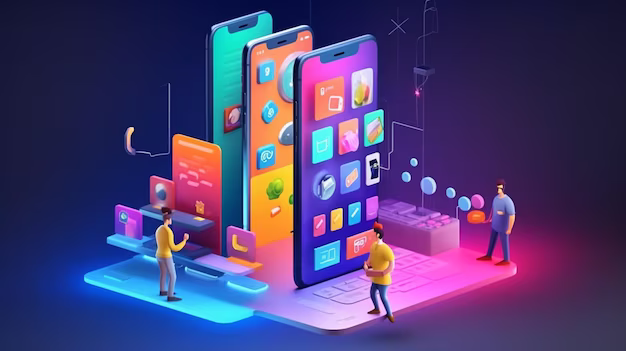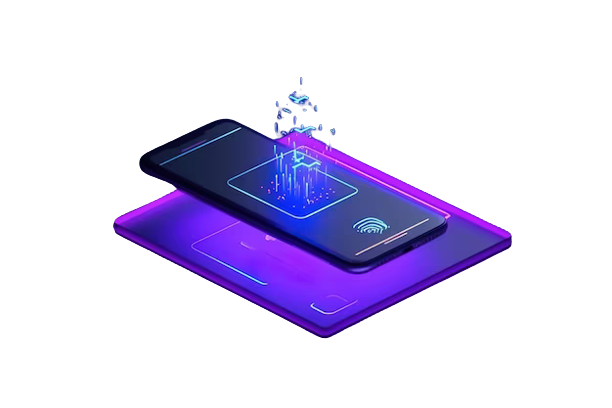
-
Apexlink
Real Estate
-
DLS
General Insurance
-
DMV
Government
-
Entiger
Fintech
-
GIS Mapping
Gas & Petroleum
-
HMS
Employee Benefit
-
HAWA
Government
-
Harley
Community
-
IHG
Hotel & Tourism
-
Sparkseeker
Humane Tech
-
Track Ninja
Sports
-
Response Vision
Disaster Management
- AI/ML Services
- Application Services
- Automation Services
- Cyber Security
- Chatbot Experts
- Data Analysis
- Data Warehouse Services
- Digital Commerce Services
- Digital Transformation
- Infrastructure Service
- Low Code/No Code
- Managed IT Services
- IT Support
- IT Consulting
- IT Outsourcing
- Mobile App Development
- IOS Development
- Android Development
- Cross Platform Development
- Gaming App Development
- Software Development
- System Design & Architecture
- Testing Services
- Web Development
When it comes to technology, stagnation is often what leads to obsolete systems. Application modernization, therefore, is an essential pivot towards future relevance. At its core, modernizing legacy applications is akin to alchemy – transforming the old into a new, more potent form, capable of meeting the ever-evolving demands of the digital age.
Legacy systems, despite their archaic frameworks, are the bedrock upon which many organizations are built. Yet, like old maps in a world where the continents are constantly shifting, these systems must evolve or risk leading us astray. This article isn't just about the 'how' of modernization; it’s a dive into the 'why', exploring the profound impact of adapting and reinventing mobile applications that were once cutting-edge but now risk becoming relics in the relentless march of technological progress.
As we journey through this narrative, we will uncover the multifaceted benefits of modernization, the strategies that guide successful transitions, and the challenges that test the resilience of our endeavors.
Understanding Legacy Applications
What are these legacy systems? They are software applications that have stood the test of time. Rooted in older programming languages, architectures, and operational paradigms, they encapsulate a bygone era of technology. Their designs, once at the forefront of innovation, now reflect the limitations and thought processes of their time.
Despite their age, these systems continue to be pivotal. They hold a wealth of data and knowledge, accumulated over years of operation. Their endurance is a testament to their initial design and construction. Yet, this endurance is a double-edged sword. The very resilience that has kept them relevant also makes them resistant to change. They often operate in silos, disconnected from the new, more agile systems that speak the language of cloud computing, big data, and artificial intelligence.
Why do organizations cling to these ancient digital artifacts? The reasons are as varied as the mobile apps themselves. For some, it's the fear of the unknown – a hesitance to disrupt the core processes that these applications support. For others, it's a matter of economics – the perceived cost of modernization weighs heavily against the uncertain benefits. And for many, it's simply inertia – the most powerful force in the universe, as even Newton might agree.
In the next sections, we will delve deeper into the compelling reasons to modernize, the strategic pathways to do so, and the challenges that lie ahead.
The Need for Modernization
In the dynamic landscape of technology, where change is the only constant, the need for modernization emerges as an existential imperative. Like sailors navigating shifting seas, businesses must continuously adapt their tools and strategies to survive and thrive.

Why modernize? At its core, the pursuit of modernization is driven by the relentless advancement of technology. Legacy systems are ill-equipped to navigate the currents of contemporary needs. They pose risks in their obsolescence, and in the very real threats of security vulnerabilities and inefficiencies.
The challenges of maintaining outdated software are many. Security risks loom large; these systems often lack the defenses to ward off modern cyber threats. Inefficiency is another specter – as the world speeds up, these systems slow down the pace of business, hampering responsiveness and agility.
Beyond all the risks, there lies a universe of opportunities that modernization opens. It's not merely about averting danger but embracing potential. Modern systems offer compatibility with emerging technologies like artificial intelligence and cloud computing, heralding new efficiencies and capabilities. They enable scalability, ensuring that businesses can grow without being shackled by their digital infrastructure.
Benefits of Modernizing Legacy Systems
The business benefits of modernizing are manifold. Improved performance, heightened security, enhanced user experience – these are not just upgrades; they're transformations that can redefine how a business operates and engages with its customers. Moreover, modernization is not a destination; it's a journey towards a state of continuous adaptation, keeping pace with the ever-changing technological landscape. Let us quickly dive through them in detail to understand better.
- Enhanced Security: As legacy systems become vulnerable, modernization protects them against contemporary cyber threats, safeguarding the invaluable treasure of data.
- Increased Efficiency: Legacy systems often trudge along like weary travelers on outdated paths. Modernization streamlines processes and hastens the pace to match the rhythm of today's business tempo.
- Scalability for Growth: Modern systems provide the room to grow. They adapt fluidly to increasing demands, ensuring that growth is not hampered by the limitations of outdated infrastructure.
- Improved Customer Experience: In the age where customer interaction is king, modern systems are the royal couriers. They enhance user engagement through faster, more intuitive interfaces, turning every interaction into an opportunity to impress.
- Integration with Emerging Technologies: Modern systems are like bridges to new worlds – AI, cloud computing, IoT. They enable a seamless connection with cutting-edge technologies, opening doors to previously unimaginable possibilities.
- Cost-Effective in the Long Run: While modernization requires investment, it's a case of spending wisely to save more. Over time, the cost of maintaining old systems often surpasses that of modernizing, making the latter a financially prudent choice.
- Data-Driven Decision Making: Modernized applications offer the tools to harness the power of data. They transform raw data into actionable insights, guiding businesses with the light of informed decision-making.
As we venture further into this exploration, it is important to remember that modernization is not just a technical challenge; it's a strategic imperative. It's about ensuring that the legacy of the past paves the way for the success of the future, not impedes it.
Strategies for Application Modernization
The path to modernizing applications is not singular but a spectrum of strategies, each suited to different landscapes of need and aspiration. Like choosing the right key for a particular lock, understanding these strategies is crucial in unlocking the full potential of modernization.

- Re-hosting (Lift and Shift): This is the technique of moving applications to a new digital habitat without significant modification. It’s often the first step in a larger journey, providing immediate benefits of a modern infrastructure with minimal disruption.
- Re-platforming: This involves making a few adjustments to reap the benefits of a new platform. Imagine retrofitting an old car with modern parts; it's still the same car, but now it runs more efficiently in the modern environment.
- Re-factoring / Re-coding: Here, the core structure of the mobile application is altered to better align with modern capabilities. It's like keeping its essence but ensuring it meets contemporary standards and efficiencies.
- Re-architecting: This is a more profound change that requires rebuilding the application with modern architecture in mind. It allows the application to fully leverage new technology paradigms, such as microservices.
- Replacing: Sometimes, the best course of action is to replace the old system entirely with a modern solution. It’s the equivalent of taking a leap into the future and embracing all the advancements that come with it.
- Hybrid Approach: Often, a combination of these strategies proves most effective. Businesses must find the right mix of strategies to get the best out of application modernization.
Each strategy comes with its own set of considerations – cost, time, impact on operations, and alignment with business goals. The choice depends on numerous factors: the current state of the mobile apps, the desired future state, the readiness of the organization to embrace change, and the resources available. Let’s discuss some of these potential challenges in detail.
BugBot: Seasia’s Innovative Tools for App Modernization
In the orchestra of application modernization, each instrument plays a vital role. Among these, innovative tools like BugBot harmonize efficiency with effectiveness. Let's explore how BugBot's capabilities can amplify Seasia's application services.
AI-Driven Testing Efficiency
BugBot, with its generative AI and automation capabilities, streamlines the testing process, turning what was once a painstaking task into a symphony of efficiency and precision. This aligns seamlessly with Seasia’s approach to modernizing applications, ensuring a meticulous yet swift transformation.
Validating Data with Precision
In the world of modernization, every detail counts. BugBot’s ability to test forms for all valid and invalid use cases ensures that even the most minute data, from email addresses to credit card information, is validated thoroughly, mirroring Seasia's commitment to accuracy and reliability.
Screen Recording for Enhanced Testing
The journey of modernization is as much about the process as the outcome. BugBot’s screen recording feature allows Seasia to meticulously record, import, and review test sessions, ensuring that every step of the modernization journey is documented and perfected.
Effortless Issue Tracking with Note Pin
BugBot’s Note Pin feature empowers Seasia’s testing teams to quickly access and make notes on important test outcomes, streamlining the process of identifying and addressing critical issues during modernization.
AI-Enabled Visual Testing for UI Perfection
As Seasia transforms legacy applications, BugBot’s AI-enabled visual testing aids in identifying any UI discrepancies swiftly. This capability is crucial in ensuring that the modernized applications are not just functionally robust but also visually impeccable.
Seamless Integration with Existing Tools
The true mark of a powerful tool lies in its ability to integrate seamlessly. BugBot’s compatibility with various automation and bug tracking systems like Selenium, JIRA, and Mantis ensures that it dovetails perfectly with Seasia's existing processes, enhancing rather than complicating the modernization journey.
Seasia Agile Model (SAM) leverages BugBot to make application modernization services more cost-effective and timelier with a potential 30-40% time savings in the testing process and reduced manual intervention.
Overcoming Challenges in Modernization
The journey of modernizing applications, while laden with promise, is not without its trials. These challenges are not mere obstacles but opportunities to evolve and fortify one's approach.
- Cost Considerations: The financial aspect of modernization can appear daunting. However, it's important to perceive this not as a cost but an investment in future efficiency and security. The key lies in meticulous planning and prioritizing, ensuring that resources are allocated wisely for maximum return.
- Resource Allocation: The allocation of resources – both human and technical – is a balancing act. It's about harmonizing the old with the new, ensuring that daily operations are not disrupted while the transformation unfolds. This requires a deep understanding of one's own organizational capacities and the skillful orchestration of available resources.
- Resistance to Change: In the human aspect of modernization, resistance to change is a common challenge. Overcoming this requires a culture of continuous learning and adaptation, underpinned by clear communication about the benefits and necessity of modernization.
- Complexity of Existing Systems: Legacy systems often resemble intricate puzzles, developed and expanded over many years. Deciphering these puzzles to integrate or transform them requires a deep understanding of their architecture and dependencies. It calls for a blend of technical acumen and strategic foresight.
- Maintaining Business Continuity: Ensuring that business operations continue smoothly during the modernization process is paramount. This involves careful planning, phased implementations, and contingency strategies to manage any unforeseen issues.
- Evaluating and Mitigating Risks: Every modernization effort comes with its risks – from data loss to system downtime. These risks must be anticipated, evaluated, and mitigated.
In essence, overcoming these challenges is about understanding the deeper implications of each decision and action, navigating through complexities with a clear vision of the desired outcome. Remember, every challenge overcome is a step closer to a future that is agile, secure, and aligned with the evolving digital landscape.
To Wrap It Up
Modernization is not just a technical upgrade; it's a fundamental shift in how businesses operate and thrive in the digital era. It's about adapting to the present, preparing for the future, and honoring the past – all at once.
The path of modernization, as we've seen, is layered with complexities and challenges. Yet, it is these very challenges that forge stronger, more resilient, and more adaptable businesses. Like alchemists turning lead into gold, companies that successfully navigate this path transform their legacy burdens into digital assets.
Are you ready to embark on this transformative journey? At Seasia Infotech, we don't just modernize applications; we craft legacies for the future. Our expertise lies in turning challenges into opportunities, ensuring that your journey of modernization is smooth, strategic, and successful.

Frequently Asked Questions
How to modernize legacy applications?
Modernizing legacy applications is a transformative journey. It begins with assessing the current systems, followed by choosing the right strategy. The process involves implementing changes in phases, with thorough testing and quality assurance. It's crucial to train the workforce for smooth adoption and commit to continuous improvement post-modernization.
What are legacy applications?
Legacy applications are software systems built on outdated technologies, often difficult to integrate with modern systems, costly to maintain, and inefficient. Despite these limitations, they remain crucial for business operations, holding valuable data and core functionality.
What are some legacy applications examples?
Examples of legacy applications vary across industries. In banking, they are old mainframe systems for transaction processing. Healthcare has early electronic medical records systems. Retail may use outdated point-of-sale systems, and manufacturing often has legacy inventory management systems. These systems represent both a challenge and an opportunity for modernization.
Got a Project in Mind? Contact us







 Blockchain
Blockchain Cloud Computing
Cloud Computing Infrastructure
Services
Infrastructure
Services Metaverse
Metaverse QA
Automation
QA
Automation UI/UX
UI/UX







